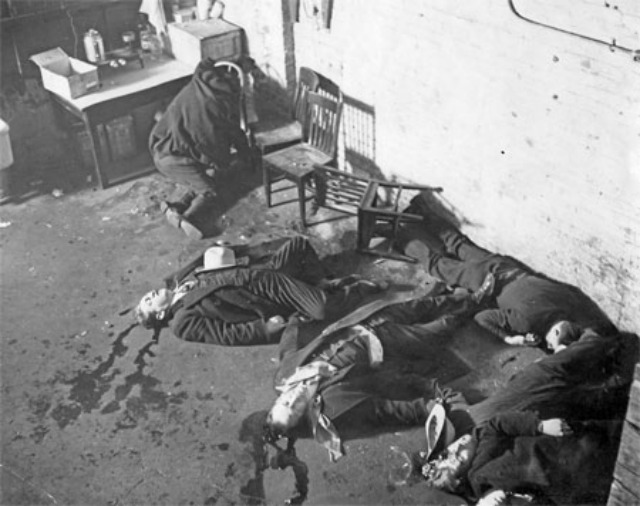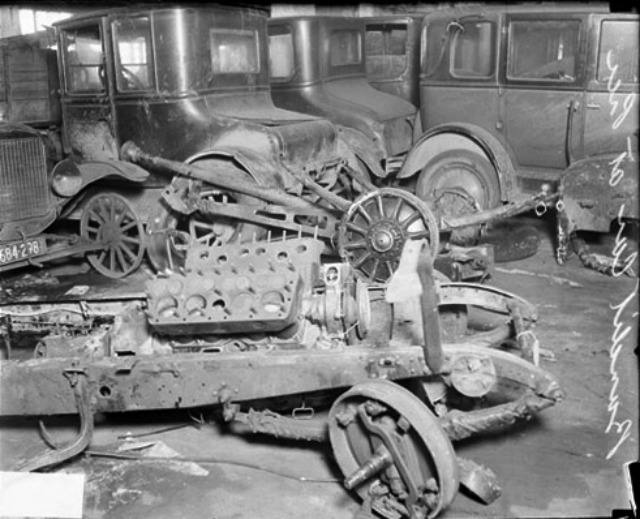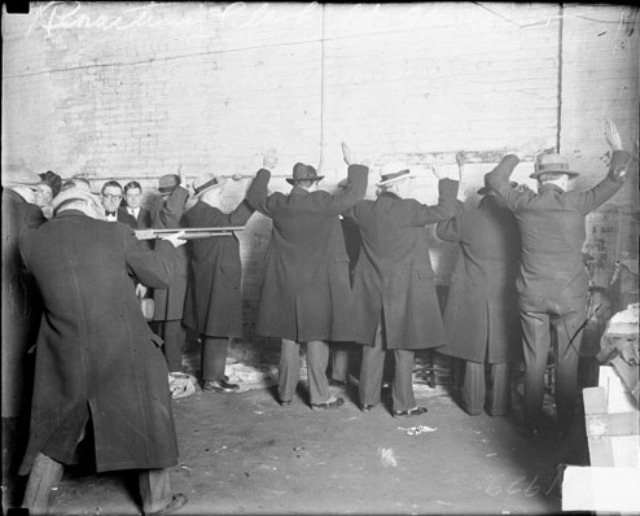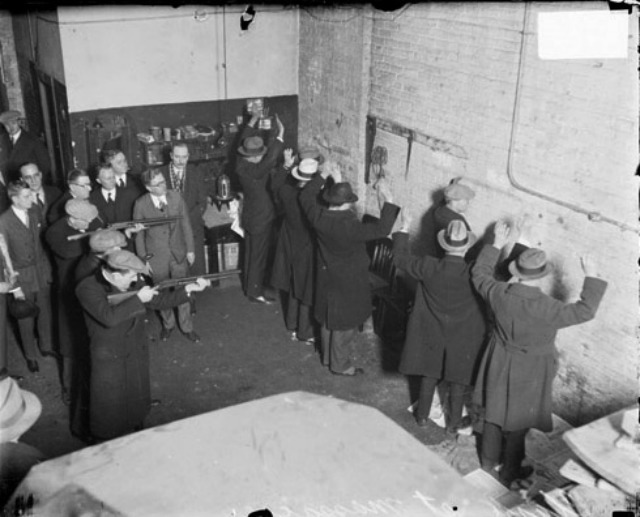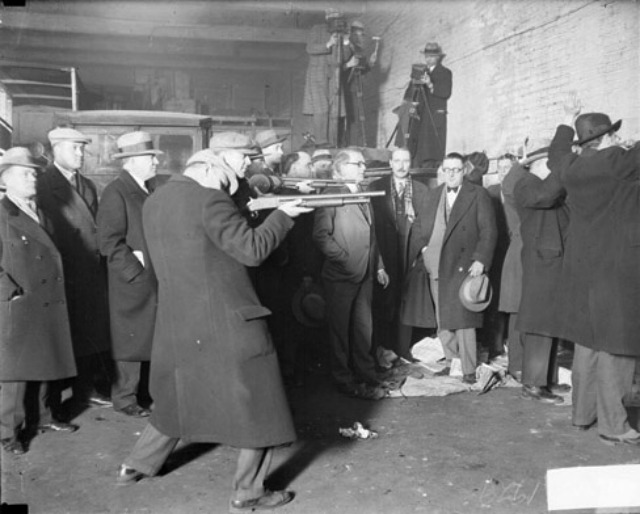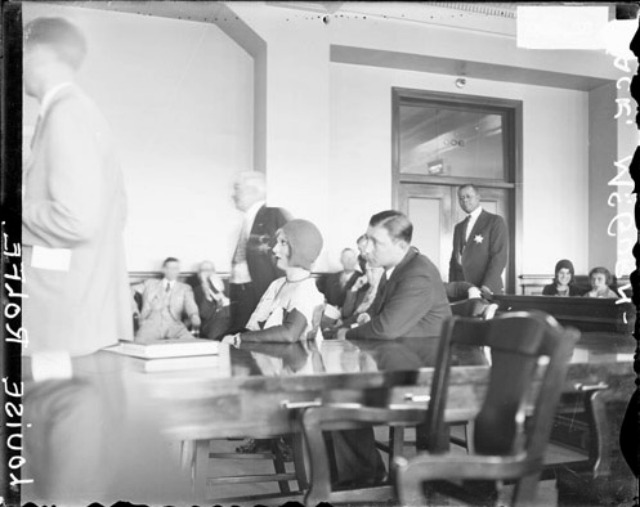Valentine's Day Was Good For Al Capone
By Chuck Sudo in News on Feb 14, 2012 10:20PM
Spend any extended time overseas and chances are, when you mention you're from Chicago, a gleam will light in a man's eye, he'll wrap his hands around an invisible tommy gun, mimic firing off a few rounds and say, "Al Capone!" (The only other public figure from Chicago I've ever seen imitated while traveling out of the country was Michael Jordan, complete with a wagging tongue and the Jumpman pose.)
The St. Valentine's Day Massacre, long considered to be the incident where Capone consolidated his power, happened on this day in 1929. Capone was never charged in the murder of seven members of Bugs Moran's North Side Irish gang at the SMC Cartage Garage at 2122 N. Clark St. By 1929, Moran was the only gangster who could pose a real challenge to Capone by then.
Here's what the late Tribune reporter John O'Brien wrote about the murders.
"At about 10:30 a.m., four men burst into the SMC Cartage Co. garage that Moran used for his illegal business. Two of the men were dressed as police officers. The quartet presumably announced a raid and ordered the seven men inside the garage to line up against a wall. Then they opened fire. Witnesses, alerted by the rat-a-tat staccato of submachine guns, watched as the gunmen sped off in a black Cadillac touring car that looked like the kind police used, complete with siren, gong and rifle rack.The victims, killed outright or left dying in the garage, included Frank "Hock" Gusenberg, Moran's enforcer, and his brother, Peter "Goosy" Gusenberg. Four of the other victims were Moran gangsters, but the seventh dead man was Dr. Reinhardt Schwimmer, an optician who cavorted with criminals for thrills. Missing that morning was Capone's prize, Moran, who slept in."
Moran was also warned to stay away from the garage by members of his crew who saw the police car. The original plan was to only kill Moran, and possibly two or three of his lieutenants.
It was alleged Capone hired gangsters from out of town so that they couldn't be recognized by their victims or any witnesses who may have had the fortitude to testify in a trial. Capone himself had an airtight alibi: he was vacationing in Florida. Capone henchman "Machine Gun" Jack McGurn, who was believed to have executed the plan, also had an alibi, his girlfriend Louise Rolfe.
McGurn is probably best known for managing the Green Mill during the 1920s and having the throat of the club's star attraction, singer Joe E. Lewis, slit nearly from ear to ear when Lewis opted to sing at another nightclub instead of renew his contract with McGurn.
WBEZ's John R. Schmidt added a epilogue for McGurn today. Schmidt tells the story of how McGurn met his own fate and how it was inspired by the 1932 version of Scarface.
"About halfway through the story, Scarface decides to eliminate rival mobster Gaffney, played by Boris Karloff. Gaffney learns of the plot and disappears. But he can't stay put. One night he goes bowling."Meanwhile, Scarface is at the theater when word comes that Gaffney has been spotted. So Scarface and some henchmen head for the bowling alley. And they don't take their bowling equipment with them.
"Out on the lanes, Gaffney is happily spilling pins."Now watch this one," he tells the guy next to him. He grabs his ball and trots to the line.
"Just as Gaffney lets go of the ball, gunshots ring out, and he crumples to the floor. But the camera follows the ball down the lane. The ball hits the pins and they scatter--all except the 10-pin, which spins crazily in circles a few times before finally falling over.
"Film critics loved the bowling scene. They praised director Howard Hawks and his use of the slowly toppling pin as a symbol of Karloff dying off-screen. In fact, the whole idea of killing a character in a bowling alley was brilliantly original. That had never been done.
"Gangland applauded the film, too. Members of the Capone mob were tickled to see their exploits portrayed on the giant screen in glorious black-and-white. Among them was Machine Gun Jack McGurn."
...
"McGurn was a sportsman. He was a scratch golfer and an expert bowler. Disdaining the wicked city where he made his livelihood, he owned a bungalow in sedate, suburban Oak Park."On St. Valentine's Evening in 1936, McGurn decided to roll a few lines. Along with two friends he drove into the city. They arrived at Avenue Recreation, 805 N. Milwaukee Avenue, about midnight.
"McGurn and his pals removed their outer clothing and prepared to bowl. Suddenly, three armed men rushed in, announcing a stickup. During the confusion one of the intruders ran up to McGurn and pumped three slugs into him.
"Machine Gun Jack died on alley two with a house ball in his hands. One homey touch was the unsigned Valentine left on his body:
You've lost your job,
You've lost your dough,
Your car and your fine houses.
But things could be worse, you know--
You haven't lost your trousers.
The assassination of Jack McGurn was a case of life imitating art.
